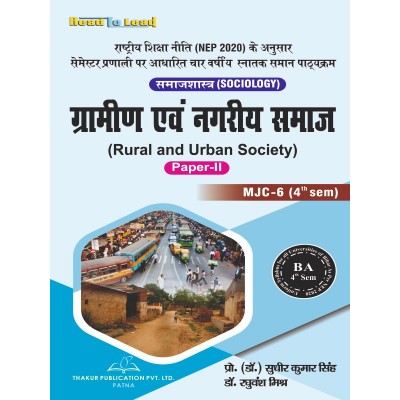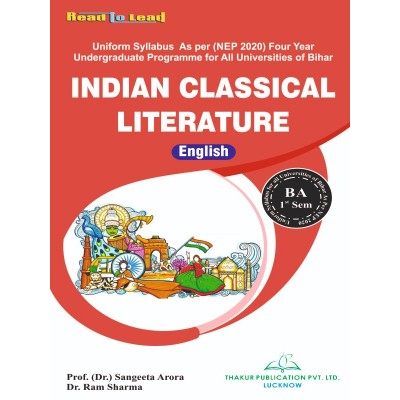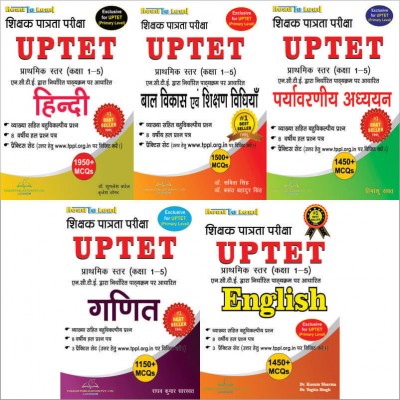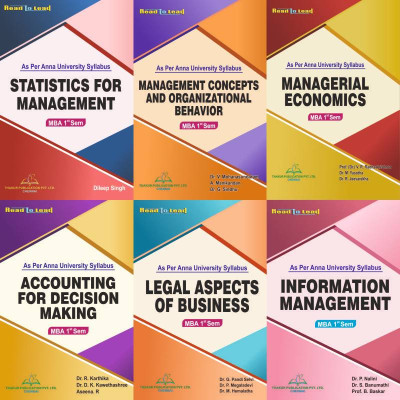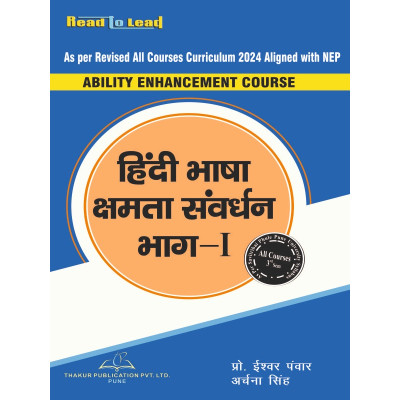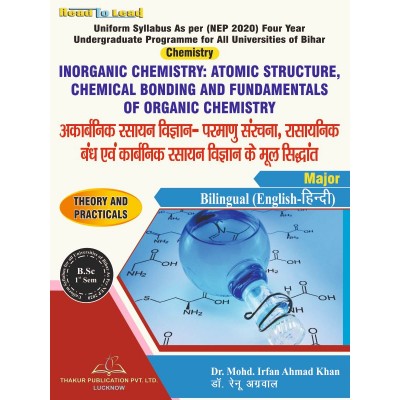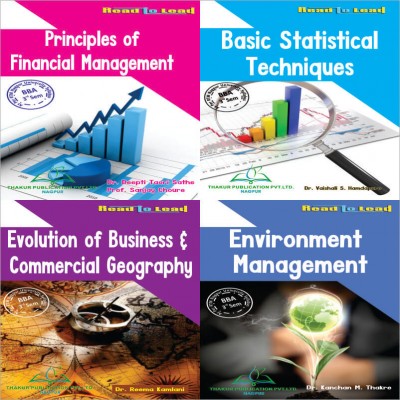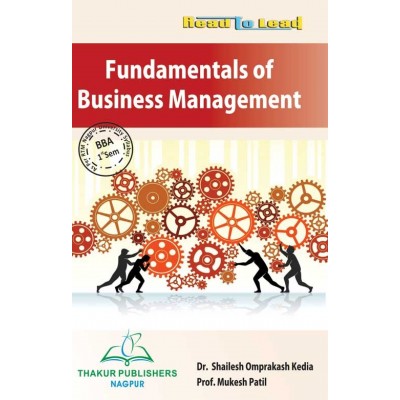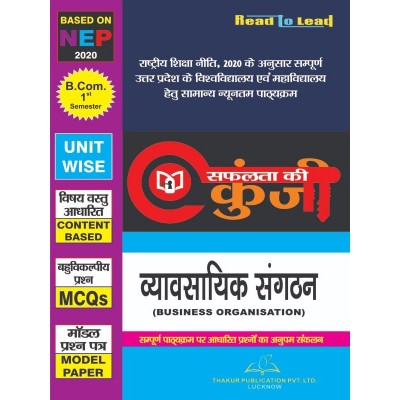Categories
- Pharmacy
-
Nursing
-
MBA
-
BBA
- U.P. State University
- Veer Bahadur Singh Purvanchal University, Jaunpur
- Chaudhary Charan Singh University, Meerut
- Dr. Bhimrao Ambedkar University, Agra
- Chhatrapati Shahu Ji Maharaj University, Kanpur
- Mahatma Jyotiba Phule Rohilkhand University, Bareilly
- Mahatma Gandhi Kashi Vidyapith, Varanasi
- Dr. Ram Manohar Lohia Avadh University, Ayodhya
- Deen Dayal Upadhyaya Gorakhpur University
- Prof. Rajendra Singh (Rajju Bhaiya) University, Prayagraj
-
BCA
- UP State Universities
- University of Pune
- I.K.Gujral Punjab Technical University (PTU)
- University of Rajasthan
- Rashtrasant Tukadoji Maharaj Nagpur University
- Uttar Pradesh NEP2020
- University of Rajasthan ,Jaipur (According to NEP-2020)
- BCCA (B. Com - Computer Science)
- Haryana
- West Bengal
- BBA (CA)
- PUNE BCA (Sci,Commerce)/B.Com (CA)
- Dr. A. P. J. Abdul Kalam Technical University, Lucknow ( AKTU )
- MCA
-
B Ed
- Lucknow University B.Ed Books
- Chaudhary Charan Singh University/Maa Shakambhari University, Saharanpur
- Dr Bhim Rao Ambedkar University, Agra
- Mahatma Gandhi Kashi Vidyapeeth, Varanasi
- Chhatrapati Shahu Ji Maharaj University
- Prof. Rajendra Singh (Rajju Bhaiya) University, Prayagraj (PRSU)
- Mahatma Jyotiba Phule Rohilkhand University(Mjpru), Bareilly
- Dr. Ram Manohar Lohia Avadh University, Ayodhya
- Bundelkhand University, Jhansi
- B.A,B.ed
- B.Sc, B.ed
- Deen Dayal Upadhyaya Gorakhpur University
- Veer Bahadur Purvanchal University (VBPU)
- Maharaja Suhel Dev State University ,Azamgarh (MSDSU)
- Raja Mahendra Pratap Singh State University, Aligarh (RMPSSU)
- Barkatullah Vishwavidyalaya (Bhopal)
- Jiwaji University (Gwalior)
- Vikram University (Ujjain)
- Dr. Harisingh Gour University (Sagar)
- Devi Ahilya Vishwavidyalaya (Indore)
- Rani Durgavati Vishwavidyalaya (Jabalpur)
- Awadhesh Pratap Singh University (Rewa)
- Maharaja Chhatrasal Bundelkhand University (Chhatarpur)
- D. EL. ED
- TET
-
B Com
-
B Sc
- B.Sc. U.P. State Universities Common Syllabus NEP
- Veer Bahadur Singh Purvanchal University, Jaunpur
- University of Lucknow
- Chaudhary Charan Singh University, Meerut
- Madhya Pradesh
- Chhatrapati Shahu Ji Maharaj University, Kanpur
- Dr. Bhimrao Ambedkar University, Agra
- Mahatma Gandhi Kashi Vidyapith, Varanasi
- DEEN DAYAL UPADHYAYA GORAKHPUR UNIVERSITY
- Prof. Rajendra Singh (Rajju Bhaiya) University, Prayagraj
- Dr. Ram Manohar Lohia Avadh University, Ayodhya
- Mahatma Jyotiba Phule Rohilkhand University, Bareilly
- Uttarakhand State Universities
- B.Sc. Bihar Universities Common Syllabus NEP
- University of Rajasthan (Jaipur)
- Haryana
-
Bachelor of Arts [B.A.]
- B.A. Of U.P. State Universities Common Syllabus NEP
- Veer Bahadur Singh Purvanchal University, Jaunpur
- University of Lucknow
- Chaudhary Charan Singh University, Meerut
- Chhatrapati Shahu Ji Maharaj University, Kanpur
- Dr. Bhimrao Ambedkar University, Agra
- Mahatma Gandhi Kashi Vidyapith, Varanasi
- Deen Dayal Upadhyaya Gorakhpur University
- Prof. Rajendra Singh (Rajju Bhaiya) University, Prayagraj
- Dr. Ram Manohar Lohia Avadh University, Ayodhya
- Mahatma Jyotiba Phule Rohilkhand University, Bareilly
- Madhya Pradesh
- Uttarakhand
- Bihar
- University of Rajasthan (Jaipur Syllabus as Per NEP2020)
- Haryana NEP-2020
- B Tech
- LLB
- SWA Education
(Botany) Diversity of Plant Kingdom B.Sc First Semester UOR NEP-2020
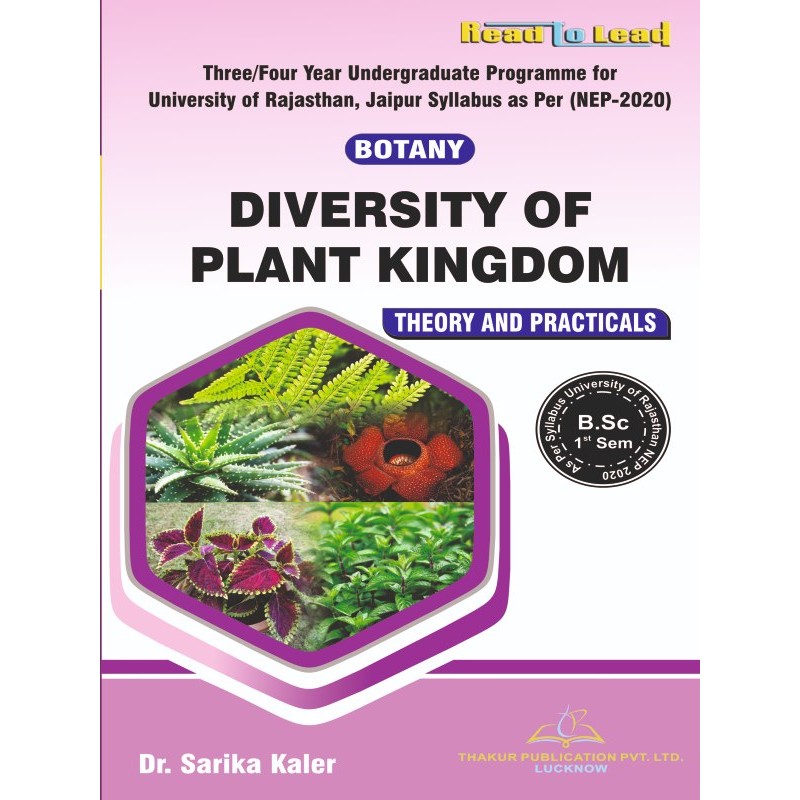
Click below to Buy E-Book Edition:
₹ 190 E-BOOK GOOGLE PLAY
Buy Latest Diversity of Plant Kingdom (Botony) Book in English Language for B.Sc 1st Semester University of Rajasthan, Jaipur NEP-2020 By Thakur publication.AUTHORS : Dr. Sarika kaler
ISBN : 9789357557764
Tax excluded
Click below to Buy E-Book Edition:
₹ 190 E-BOOK GOOGLE PLAY
Buy Latest Diversity of Plant Kingdom (Botony) Book in English Language for B.Sc 1st Semester University of Rajasthan, Jaipur NEP-2020 By Thakur publication.AUTHORS : Dr. Sarika kaler
ISBN : 9789357557764
Syllabus
Course Code: BOT-UG-CC01
Diversity of Plant Kingdom
|
Unit |
Topic |
No. of Lectures |
|
I |
Algae: General characters, Classifications (Fritsch) up to classes, Diverse habitat, Range of thallus structure, Reproduction (Vegetative, Asexual, Sexual). Types of the life cycle. Type studies of Cyanophyceae - Nostoc, Oscillotoria, Chlorophyceae - Chara; Rhodophyceae - Polysiphonia. |
15 |
|
II |
Fungi: General characteristics; Thallus organization; Types of fruiting bodies, Cell wall composition; Heterokaryosis and Parasexuality; Nutrition; Classification (Alexopoulos); Reproduction, Economic importance, Type studies: Oomycetes: Albugo, Zygomcota: Rhizopus, Basidiomycota: Agaricus. Lichens: General characters, Habitat, Morphology and Reproduction. |
|
|
III |
Bryophytes: General characters, Origin, and evolution of Bryophtya, Classification (Rothmaler) Habitat, Range of thallus structure, Reproduction (Vegetative and Sexual), Alternation of generations and Economic importance. Study of Morphology, Anatomy, Reproduction, Gametophytes and sporophytes of Marchantia, Anthoceros and Funaria. |
15 |
|
IV |
Pteridophytes: General characters of Pteridophytes, Affinities with Bryophytes & Gymnosperms, Classification, Economic importance, Study of life histories of fossil Pteridophytes - Rhynia. Type studies life histories of Selaginella (Heterospory and Seed habit), Marsilea. Stelar System in Pteridophytes |
|
|
V |
Gymosperms: General characters, Classification, Type studies Life histories of Cycas and Epedra, Economic importance of gymnosperms. |
15 |
|
VI |
Angiosperms: General characters, Differences between Monocotyledons and Dicotyledons, Typical life cycle of Angiosperm. |
Suggested Laboratory Exercises:
1) Visit Local Garden/field study of plants
2) Study of anatomy by making suitable temporary slides and study of permanent slides of Chara, Vaucheria, Ectocarpus, Polysiphnia (Vegetative and reproductive).
3) Lichens: Study of growth forms of lichens (crustose, foliose and fruticose)
4) Rhizopus: study of asexual stage from temporary mounts and sexual structures through permanent slides; Agaricus: Peziza, Specimens of button stage and full grown mushroom; sectioning of gills of Agaricus.
5) Bryophytes: morphology of vegetative and reproductive stages of Marchantia, Anthoceros and Funaria.
6) Pteridophytes: study of vegetative and reproductive stages of Selaginella-(Heterospory and seed habit), Equisetem, Marsilea.
7) Study of Vegetative and reproductive stages of Cycas, Pinus and Ephedra using temporary and permanent slides.
8) Study of monocot and dicot flowers and seeds.
16 other products in the same category:
Your review appreciation cannot be sent
Report comment
Report sent
Your report cannot be sent
Write your review
Review sent
Your review cannot be sent









